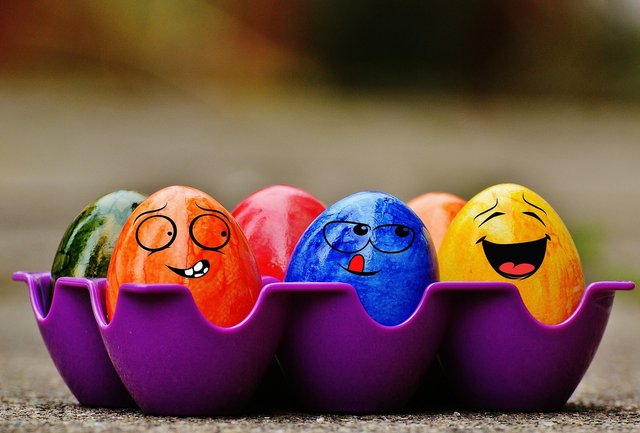Game Design 101- Step 3: Brainstorm
Brainstorming is my favorite part of the game design process. If you’ve followed the steps up to this point, you have a core inspiration and a set of initial parameters for your game.
Today, we are going to take those tools and use them to generate a staggering number of ideas in a very short period of time. The brainstorming process is broken down into three phases.
1. Creation

During the first phase of brainstorming, the goal is to get as many ideas down on paper as possible. During this phase, my motto is: “There are no bad ideas.” Everything is fair game.
Use your initial inspiration and parameters as a jumping off point, but let your mind go wild from there. Each idea you write down will spawn other ideas that will in turn spawn even more. Continue to write things down for the entirety of your allotted time.
Even if one of your ideas is totally impractical (e.g. This game requires zero gravity to play), it may help lead you to an innovative solution you haven’t thought of (e.g. I could use magnets as game pieces that repel each other). Even if you have one idea for how a specific part of your game will work, keep writing until you come up with three or four more- you want to get past the obvious solution and dig for hidden treasures in your psyche.
If you stop writing for more than 20 seconds, you are still being too critical with your ideas. If you hear that voice in your head saying “That will never work!” or “That’s stupid!” just tell the voice to be quiet and stand in the corner. You’ll have plenty of chance to censor and edit later- don’t let your judgmental mind restrict your creative mind during this phase.
It may help you to think of this as play- nobody but you will see these ideas and it is OK to be as ridiculous as you want- have fun with it!

When you finish this phase you should have a massive list of ideas in a random jumble on your page- ready to be organized into something useful.
2. Organization
After finishing phase 1, you should have a giant list of ideas on paper in front of you. Now, step back and look at the whole image. Let your mind find patterns between the different ideas and start to group them together into like categories.
Mind mapping tools are incredibly helpful here. There are many ways to group ideas, but here are a few that work well for games:
- Core Mechanics
- Setup
- Theme
- Resources
- Components
- Turn Structure
- Victory Conditions
You may also have crazier categories for ideas like: Requires Nuclear Fission, Solid Gold Psychic Aliens, Edible Game pieces, etc. Again, there are no wrong answers here.
As you organize, other ideas will come to you to “fill in the gaps” in categories you are building. Go ahead and add those in as well. Look for ways to connect where you are now to some of the ideas you’ve written down. How would you get from here to there? What other components would need to exist? How would a player experience this idea?
When you finish this phase, you should have a relatively organized set of concepts- some great, some crazy, some unfinished, and some that seem close to executable. You are then ready for the next phase.
3. Elimination
This is where your inner critic turns back on. Start filtering through the ideas and find the core elements that can be prototyped. Whereas your goal in phase 1 is to get as many ideas as possible, your goal in phase 3 is to prototype as few things as possible. Ask yourself what the best part of your design is and figure out the cheapest, fastest way to test it.
We will talk more about prototyping in the next article, but the key principle is to try and test your assumptions in the form of real gameplay as quickly and efficiently as you can. Don’t worry about leaving great ideas on the table at this point- you can always come back to them in the next cycle. You are trying to find the gem that will form the heart of your design and the minimum number of additional things required to test and iterate on that gem.
For practical implementation of the above ideas, I recommend setting aside 20 minutes for each phase. If you feel like you are on a roll and want to run over, that is OK, but don’t spend less than 20 minutes in each phase. This is critical as each phase uses a very different part of your brain, and it takes time to ramp up to maximum efficiency.
Group Brainstorming

Often, you will be working on a game project with other people, and group brainstorming can be a great way to get more ideas than you would ever come up with on your own. There are several risks associated with a group brainstorm, however. Finding the right people and enforcing the right kind of discipline are key to making the most out of a group brainstorm. I recommend that you go through the brainstorming process individually before bringing in a group so you have a sense of what to expect.
Make sure that everyone understands the “No Bad Ideas” rule for the Creation phase. If the group dynamics support each other to keep making more and more ideas, then a group brainstorm session can be a huge asset. If, however, people are afraid to say ideas for fear of looking stupid or being embarrassed, then they will self edit and you can miss a lot of great ideas. As ideas are shouted out, write them on a white board or some other large visible medium. One great tactic can be to give everyone sticky notes and have them write down their ideas individually for 10 minutes, only then adding the ideas to the wall and using them to spawn more group ideas. Keep group brainstorms small (2-5 people)to help encourage participation and prevent people from “hiding” in a larger group.
Once you’ve finished brainstorming, you should have a whole bunch of ideas written down and a have identified the core design ready to move into Step 4- Prototyping.
Hi, I’m Justin!
I’ve been obsessed with games since a very young age. I won the Magic: the Gathering US National Championships at the age of 17 and played cards professionally for 5 years, traveling the world and paying my way through college. I started designing games professionally in 2004 and I founded my own game company in 2010. I’ve launched multiple hit games with some of the biggest brands in the world including Marvel, DC, and World of Warcraft. I love reading, writing, dancing, meditating, learning, and helping others. Learn more about me here.
"This post originally appeared on my blog ...... - it has been modified and updated exclusively for Steemit!”
Its refreshing to see other game developers on here, but its mostly been us programmers. Design is so critical. A lot of great thoughts in your posts so far.
I'm looking forward to the prototyping phase. Both when I was in AAA and now as indie / hobby we use the paper simulation method, getting a group together, putting game elements on paper and playing through it on a table, discussing what we like, don't like and what could make it better along the way.
But I don't want to steal your fire, so I'll stop there. :) I can't wait to read about that and perhaps other prototyping methods you have used!
Nice to meet you and thanks for the comments! You are right on the money about prototyping. Cheap and fast is the name of the game and paper prototyping is one of the best tools available. More in the next article ;)
Nice. It's amazing what we can create when we understand how the brain works.
Yes. I honestly didn't think of myself as a "creative person" until I learned these tricks. Its all about process!
This is such a great post! The content is awesome, but the structure and formatting makes it such a great read! Thanks for sharing!
Thank you! I am really glad you enjoy the article and that all that time spent rewriting and reformatting isn't wasted ;)